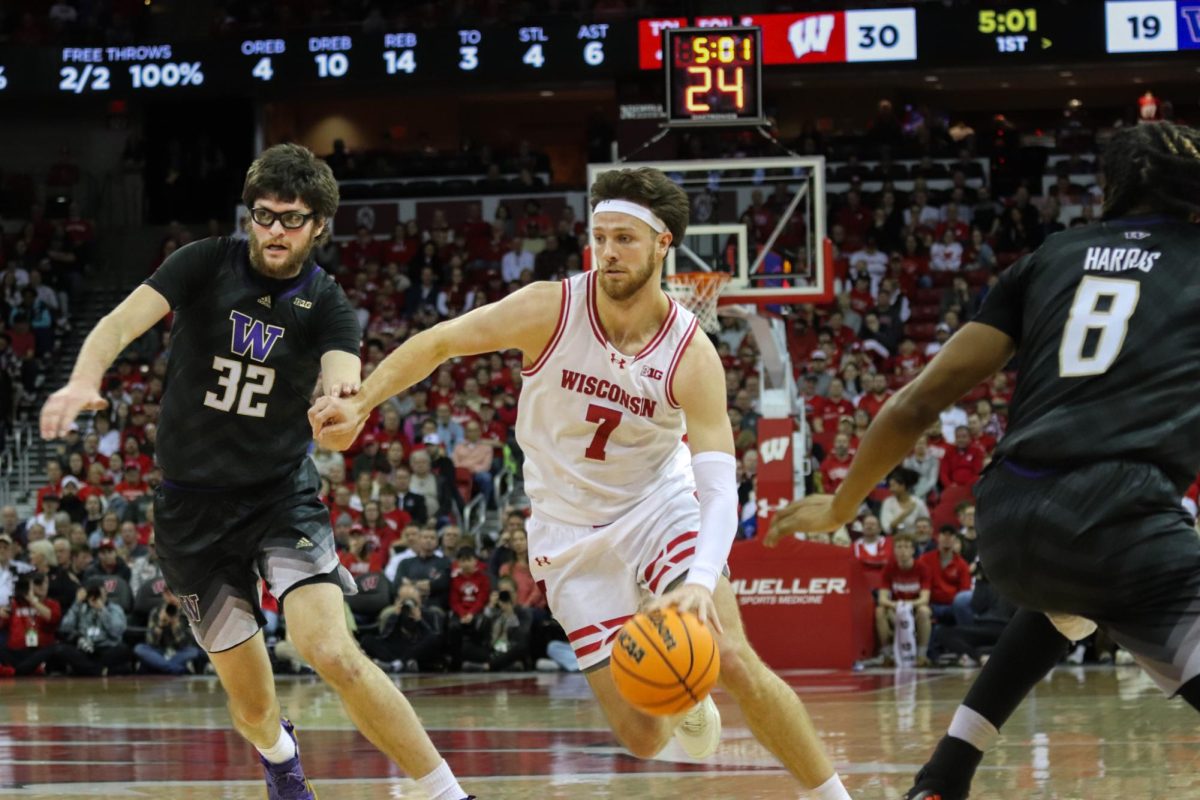Carter Gilmore of Hartland, Wis. has broken many of the common stereotypes in the modern college basketball landscape. He spent five full seasons with the University of Wisconsin men’s basketball team, in an era where players commonly transfer two, three, maybe even more, times during their college careers.
Gilmore, however, isn’t like the rest.
He began his Wisconsin career in the 2020-21 season, appearing in nine games, essentially only playing in “garbage time.” Come the 2021-22 season, Gilmore’s appearances did increase to 22 games, but he was still only seeing about nine minutes of action per appearance.
In this day and age, it would almost be expected that a guy would transfer (take a look at Daniel Freitag, who is transferring in search of finding a new program where he can get more playing time), and maybe give themselves a chance to play and make a name for themselves at some other program.
But Gilmore stayed true to Wisconsin, returning for a third season and playing in 35 games, averaging 19 minutes of action per appearance. While his numbers don’t jump off the page, as he averaged 2.5 points, 2.5 rebounds and one assist per game, he still got rewarded for his loyalty with a solid role in the rotation.
After receiving an extra year of eligibility, maintaining his status as a junior for the 2023-24 season, his minutes flew back down to only nine minutes per appearance, in 33 games. As expected, all of his averages subsequently decreased in the reduced time on the court.
Four years at Wisconsin, inconsistent playing time and a career high in the single digits — it would be pretty normal to almost feel confused about why Gilmore would stay loyal to a school where he struggled to crack a consistent role in the rotation.
Coming into Gilmore’s fifth collegiate season, this past season, the Badgers were projected to struggle. There was uncertainty about who would break out, what the rotation would be like, how the Badgers would even perform in the expanded Big Ten. Gilmore, however, didn’t care about the noise at all. All Gilmore knew was that he had a chance to ball out in his last season.
And ball out he did, as he earned an expanded role in the rotation, even leading the Big Ten in games played with 37. Furthermore, he averaged a career high with 19.1 minutes per appearance. He also averaged career highs with 3.9 points per game, half a block per game, 1.3 assists per game and 2.6 rebounds per game.
To keep going, he notched his first two games of double-digit points in his collegiate career in consecutive games against Northwestern (career high 15 and first double digit performance of his career) and Indiana (10 points). He later notched another 10-point performance against Michigan State in the Big Ten Tournament.
It’s a story of an underdog, a story of a man that people can relate to. Someone who was doubted, someone who put everything he had into his craft every day, embracing the rewards he reaped for his hard work. It was easy for fans to get behind him, to cheer him on. Frequently, it was Gilmore who would get the loudest roar at home games when he would check into the game.
It is probably fair to say that all Badger fans will miss Gilmore now that his collegiate career has ended. He was a part of several Badger teams that got top-six seeds in the NCAA tournament. He was a key spark plug off the bench for Badger teams that made back-to-back Big Ten Tournament championship game appearances.
His presence on the court will be missed by fans, players and coaches alike, but either way, his time and loyalty to the Badgers over the last five years will always be appreciated.
Thank you, Carter Gilmore.



